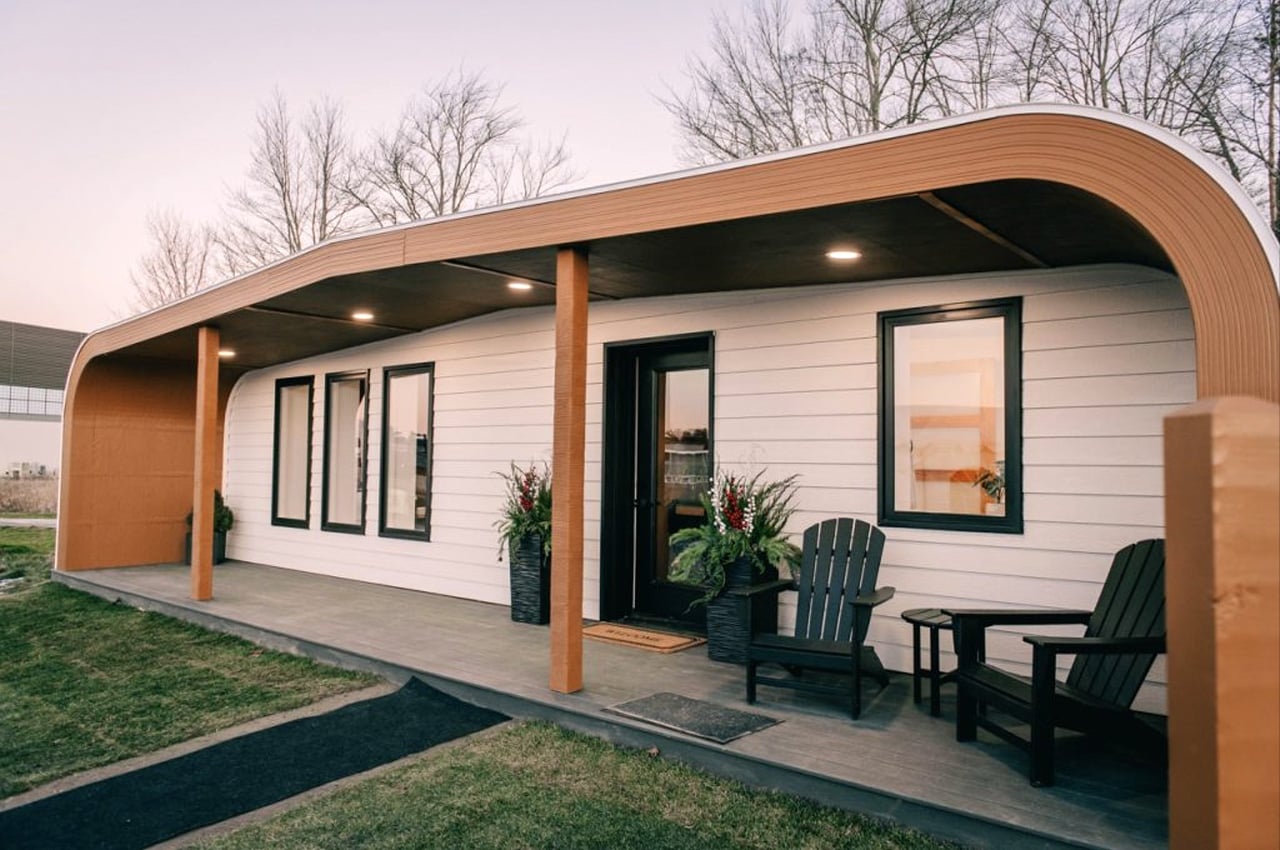
There’s something about wooden architecture that is simply so humble and endearing. Wood has been a material of choice for construction for ages galore. Wood ages beautifully – anything built with wood will retain the character of your house. And it also manages to incorporate an aura of warmth and serenity within the living space. The rustic and homely appeal of a wooden space instantly makes you feel at ease and welcome. It’s a material of choice that has stood strong through the ages and continues to do so. Whether modern or traditional, wood can be bent and molded to create a living space of your choice and style. From a timber net-zero home to the world’s first 3D-printed home that happens to be wooden – this collection of architectural designs will leave you mesmerized and completely in awe of the wonderful yet simple material that is wood!
1. BioHome3D
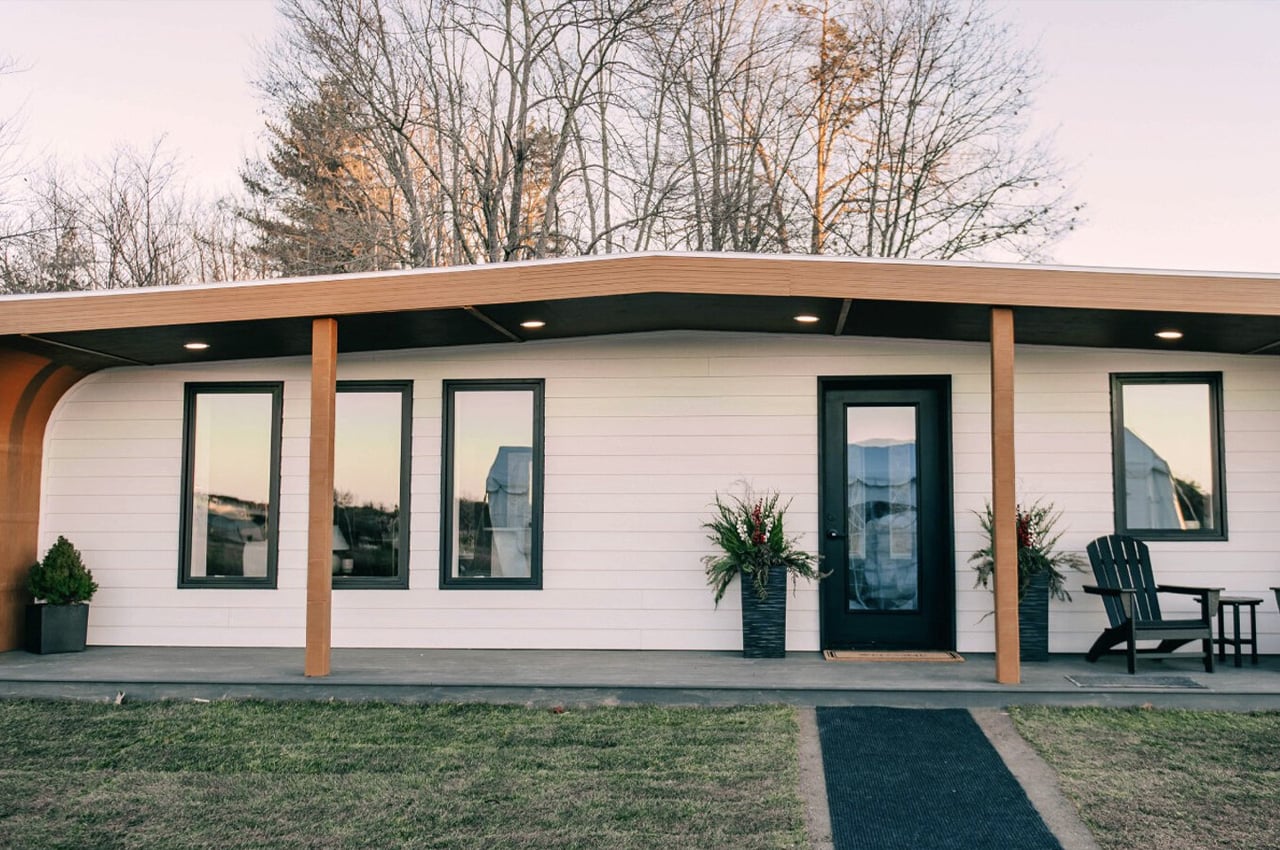
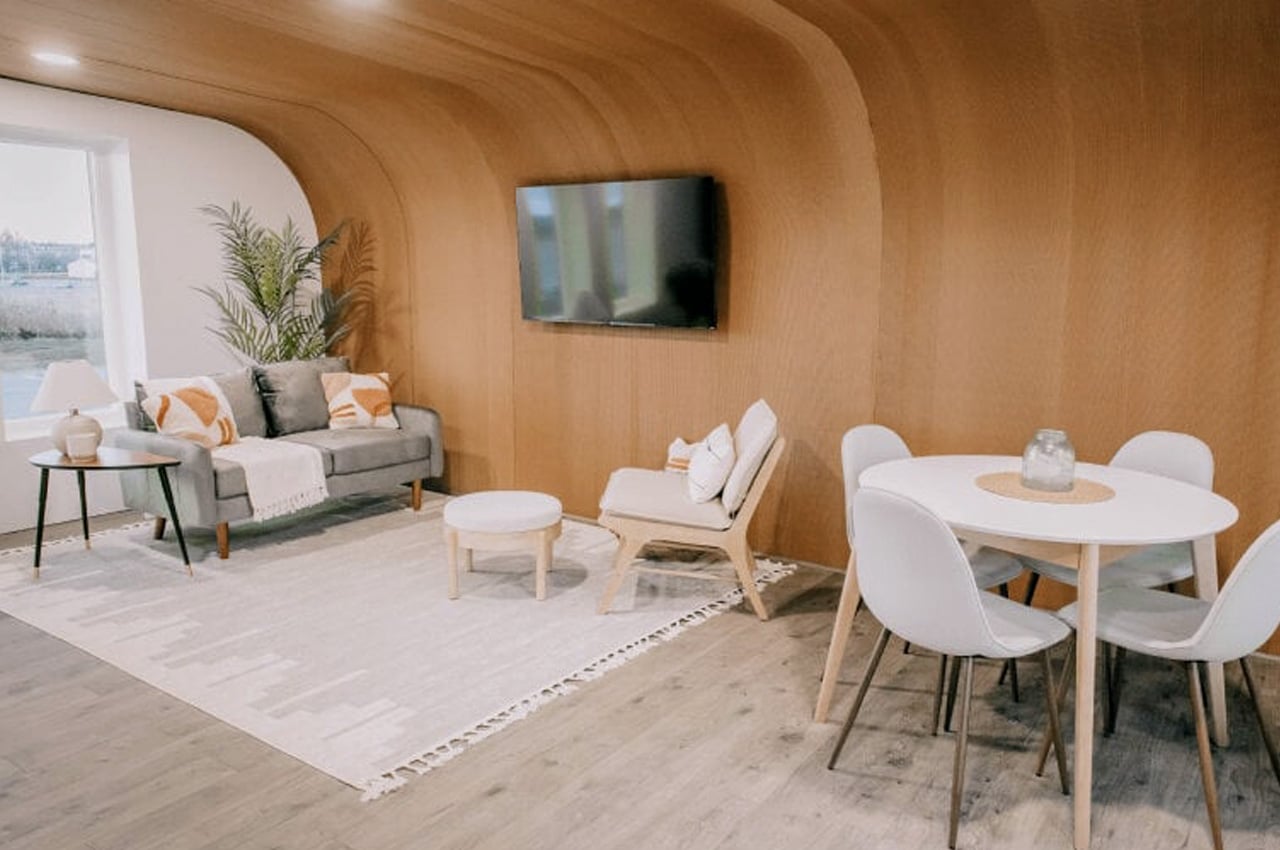
The world’s first 3D-printed home built entirely from bio-based materials such as wood flour or fine sawdust, mixed with a binder made from corn was created by the University of Maine Advanced Structures and Composite Center (ASCC). It is called the BioHome3D, and was specially designed to resolve labor supply chain issues that elevate the costs of homes and reduce the availability of affordable housing.
Why is it noteworthy?
The technology used to build the BioHome3D ensures that the home is primarily manufactured off-site using automation, which leads to less time for off-site3 building and setting up the home.
What we like
- Tackles the issue of labor shortage and supply issue
- 3D-printed
What we dislike
- No roof space to allow for vertical growth
2. The New Forest House

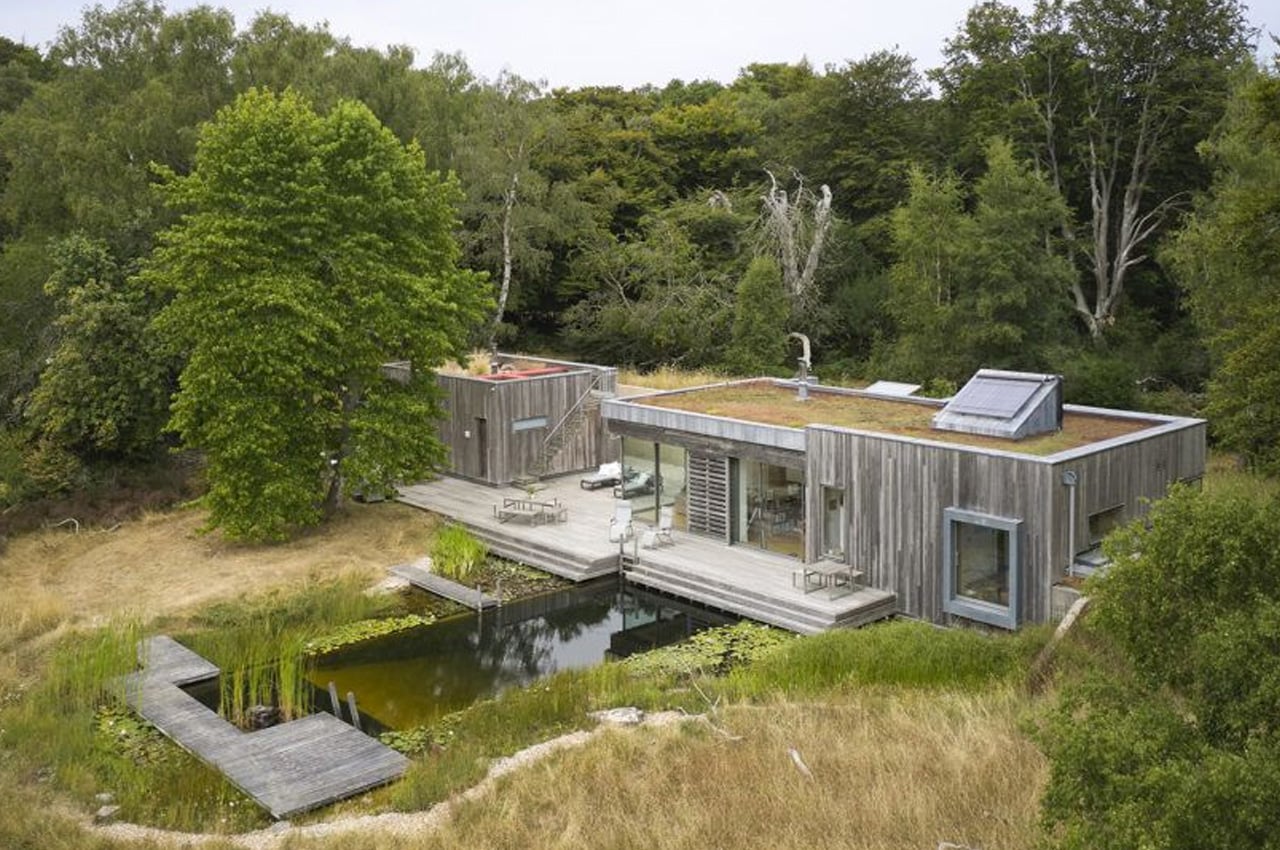
PAD studio has been conducting a study on the New Forest House in the New Forest National Park for the past 10 years. It has been looking into the true environmental impact of low-energy homes.
Why is it noteworthy?
The building was carefully constructed to ensure that minimal disturbance was caused to the surrounding site, as well as the site’s sensitive landscape. The residence features the main house and a guest annex.
What we like
- The New Forest House is a 97% less expensive house to run as compared to a house built in accordance with 2021 building standards
- The house utilizes 110% less energy as compared to a home powered by gas
What we dislike
- The glass pane walls means there is a low privacy/security in the main house.
3. Algonquin Highlands Cottage
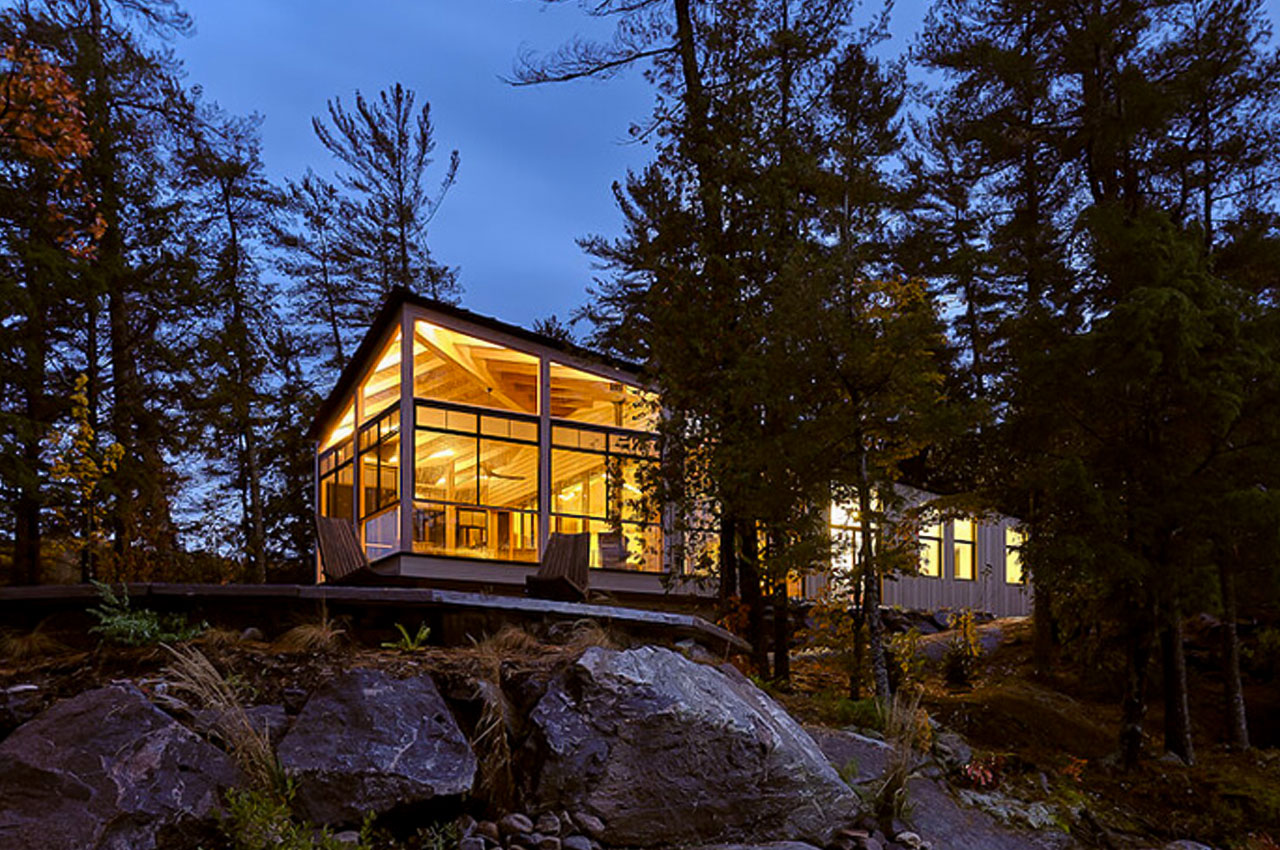
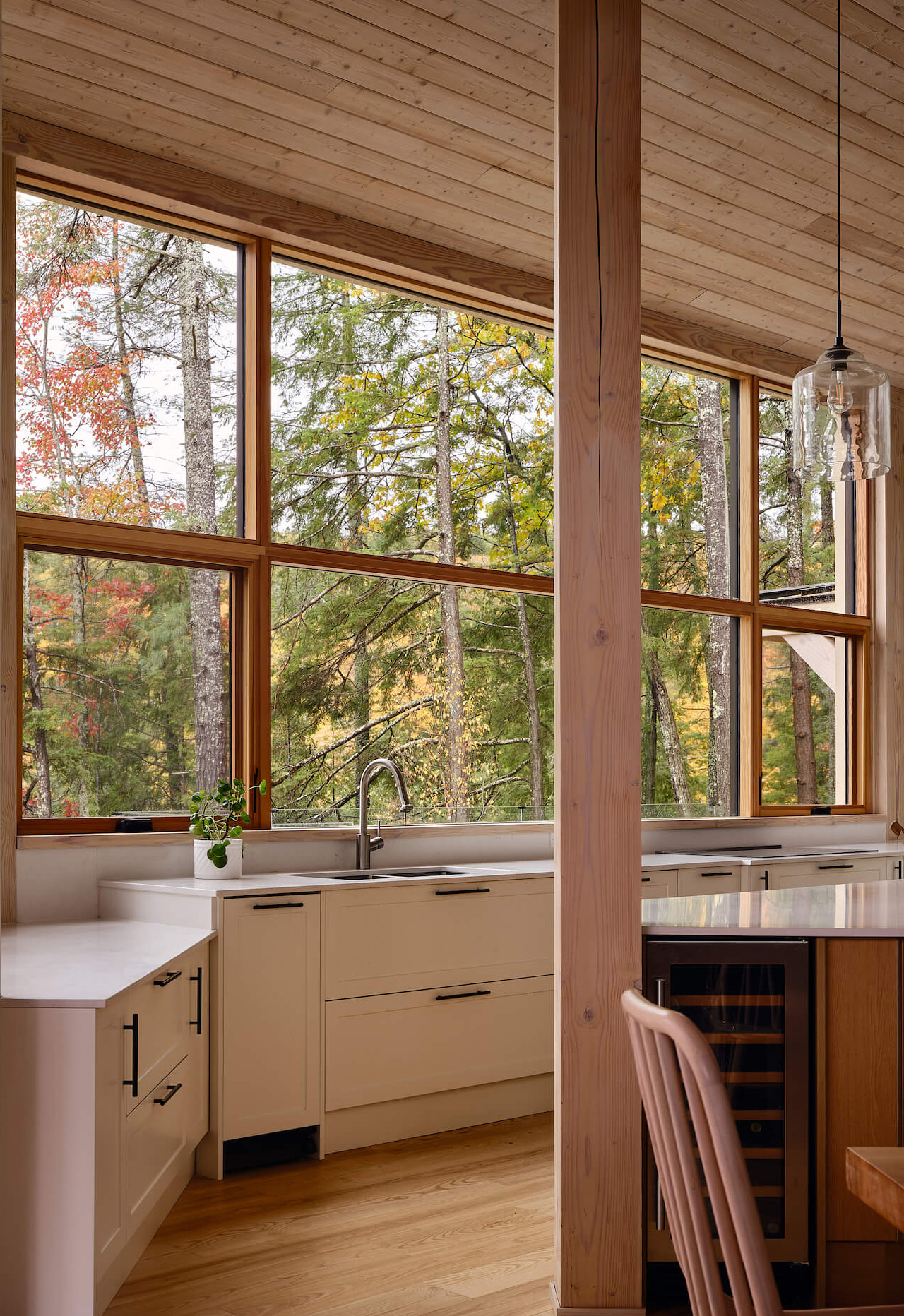
Located on an island peninsula in the lake of Algonquin Highlands is an idyllic wooden cottage built by BLDG Workshop. The lovely cottage has a view of the rocky outcrops and shorelines of the Great Canadian Shield and makes for a picturesque getaway location.
Why is it noteworthy?
The cottage was constructed while paying special attention to the relationship between indoor and outdoor space, and the natural landscape of Ontario. The natural elements of the site were amplified and elevated – for example, the sun patterns on the peninsula since they are related to the morning and evening light.
What we like
- The studio incorporated a large indoor-outdoor space at the front peak of the home, which overlooks the lake and the stunning landscape
What we dislike
- The location of the cottage is a bit remote, making it difficult to access.
4. Villa of the Star
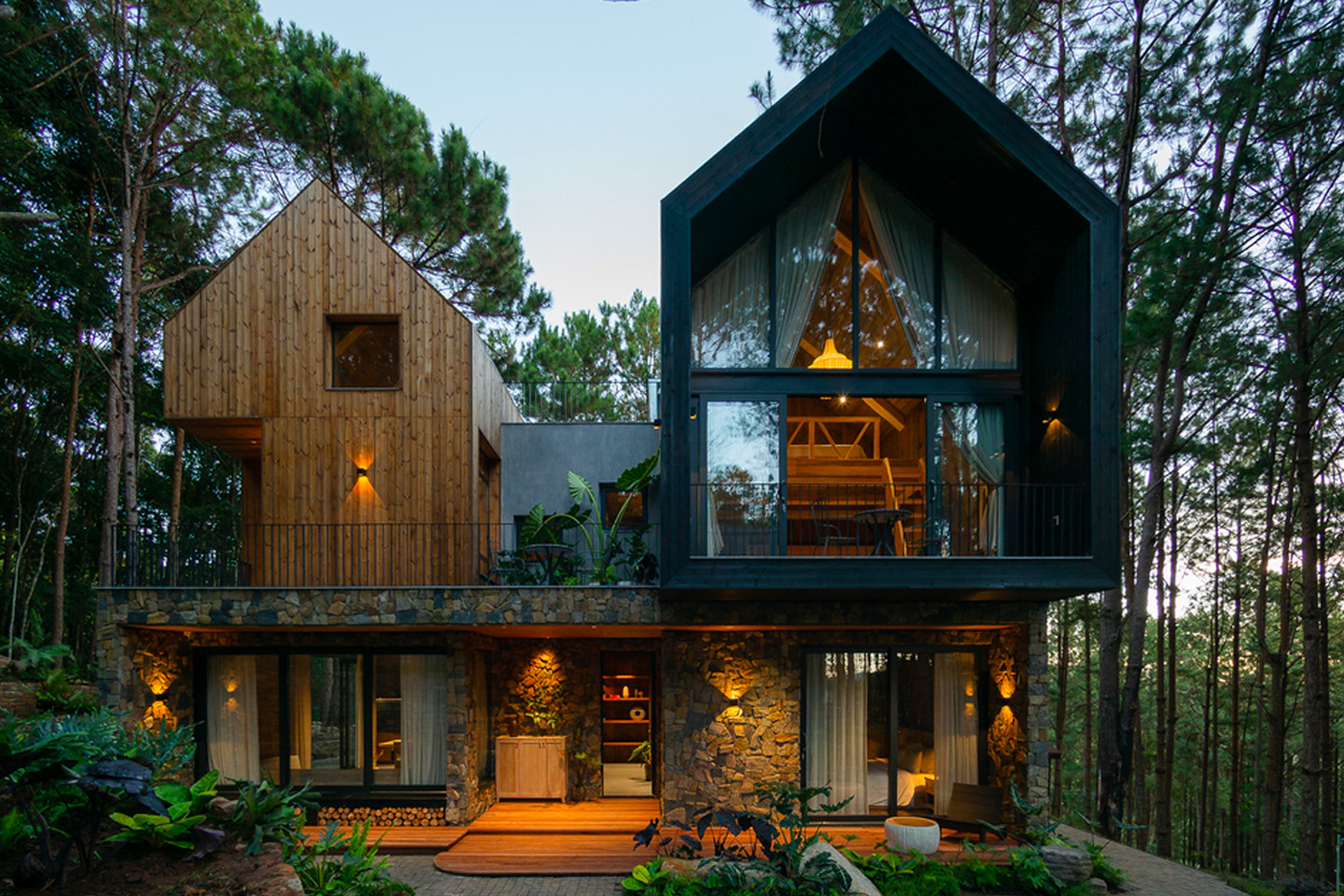
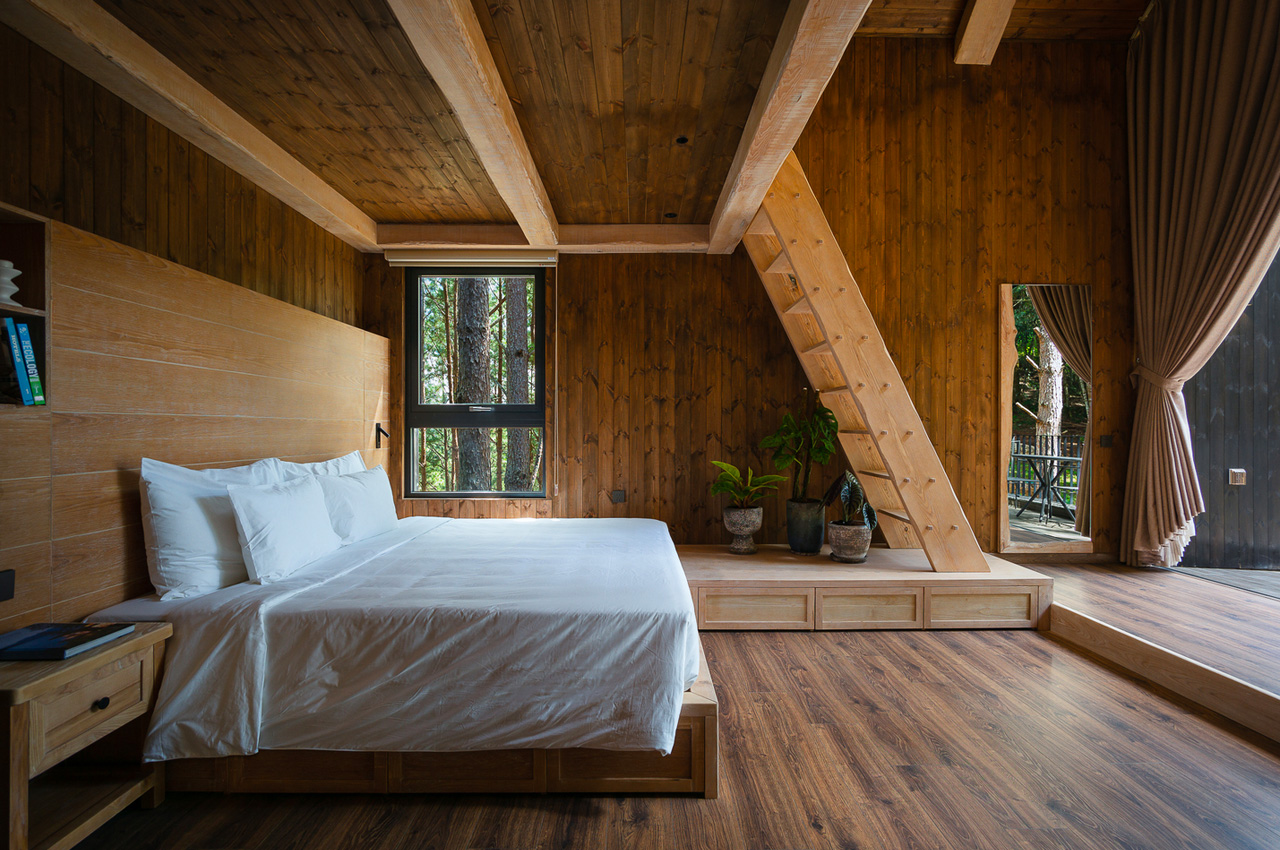
Located in the Dalat pine forest, Vietnam is a beautiful resort space called Villa of the Star. Design practice APS Concept renovated the space and built the house while focusing on three essential and main factors – connectivity, locality, and sustainability.
Why is it noteworthy?
The unique residence merges perfectly with the forest surrounding it, building a serene human-nature connection. The structure is built using a variety of locally sourced materials, such as stone, pine wood, concrete, steel, and bricks.
What we like
- The material that was selected by the design team for the home is ‘modified pine wood’. Modified pine wood is popular for its moisture resistance, mildew resistance, termite resistance, heat resistance, stability, durability, and environmental friendliness
What we dislike
- The open terrace/balcony space would benefit from an optional expandable roof for days with heavy rains
5. McGee’s Tiny Home
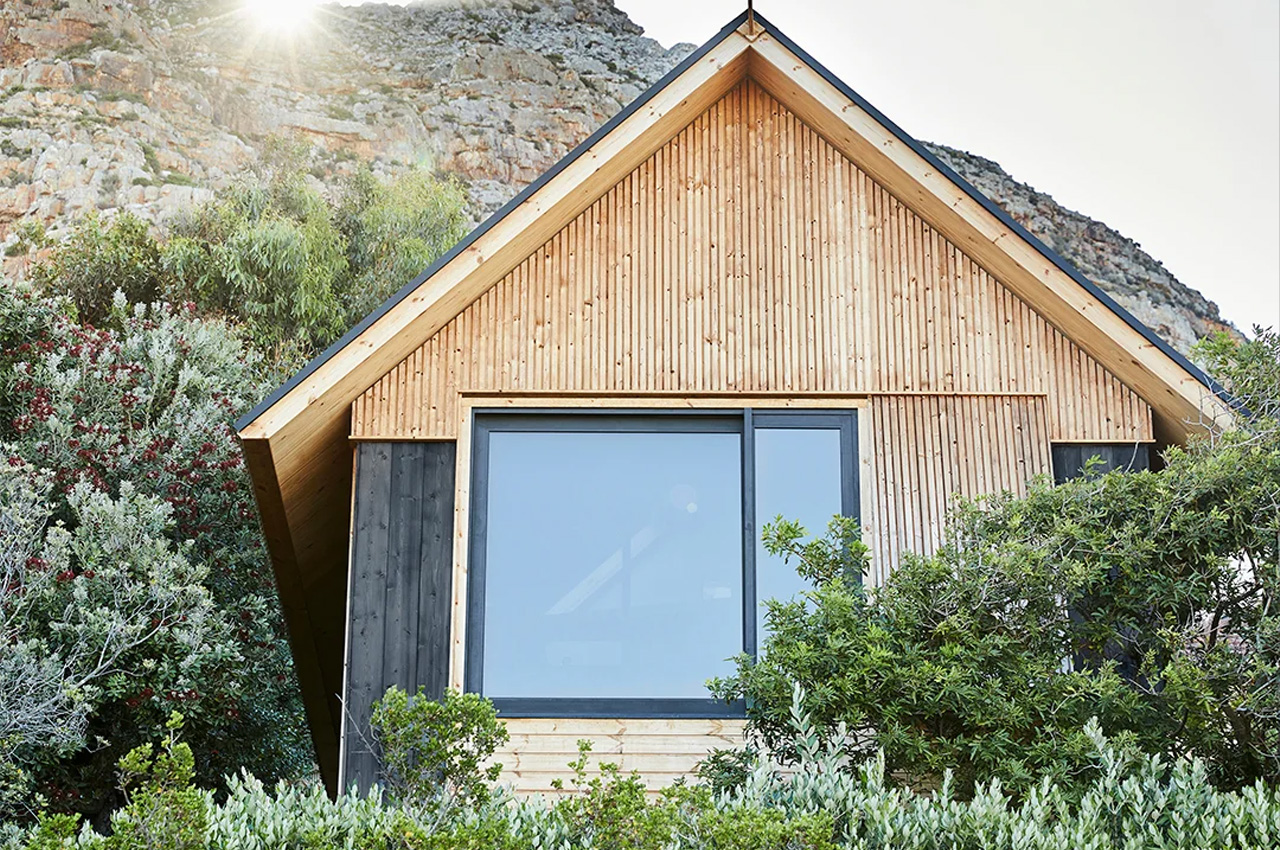
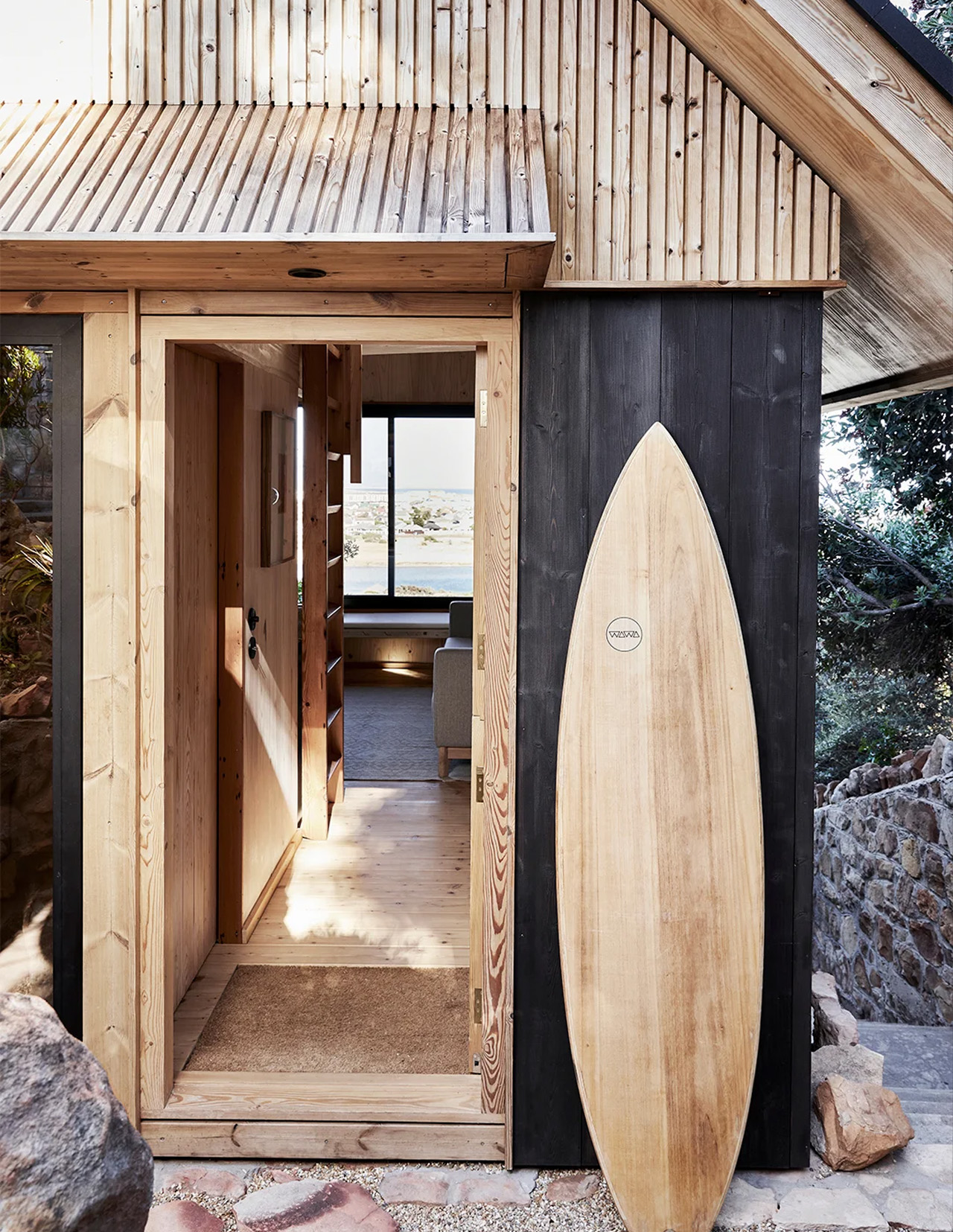
This lovely little home is located at the bottom of a rocky hillside and is surrounded by cypress trees and buchus. The tiny wooden cabin overlooks the Muizenberg, one of Cape Town’s best-known surfing spots, and occupies 390-square-foot of space.
Why is it noteworthy?
The stunning view can be enjoyed owing to the windows seat that has been added to the space. It was designed by architect Alexander McGee and is located next to his South African home.
What we like
- No gutters have been added to the roof, and this allows McGee and his family to watch the rainwater run off the roof from different angles
What we dislike
- The home isn’t sufficient or big enough for larger families
6. The Water Cabin
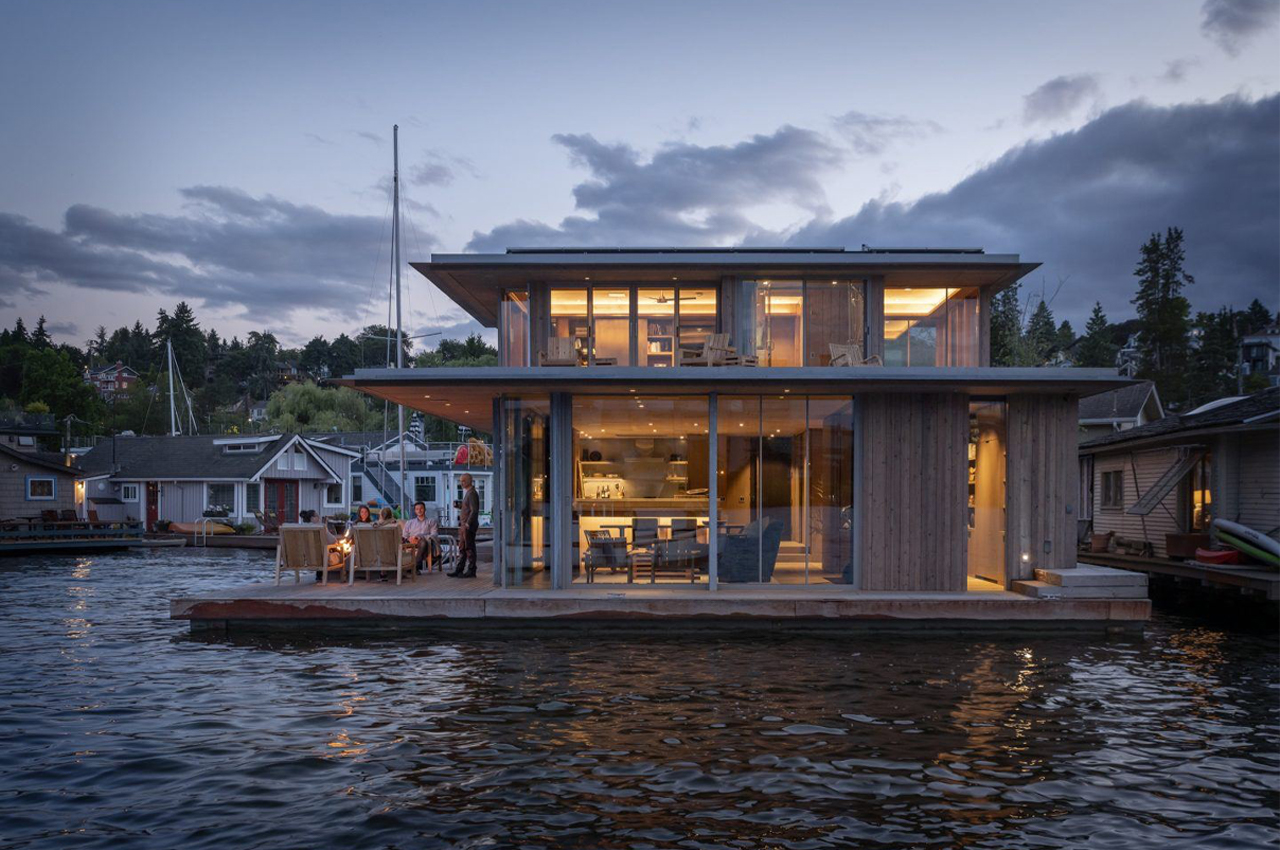
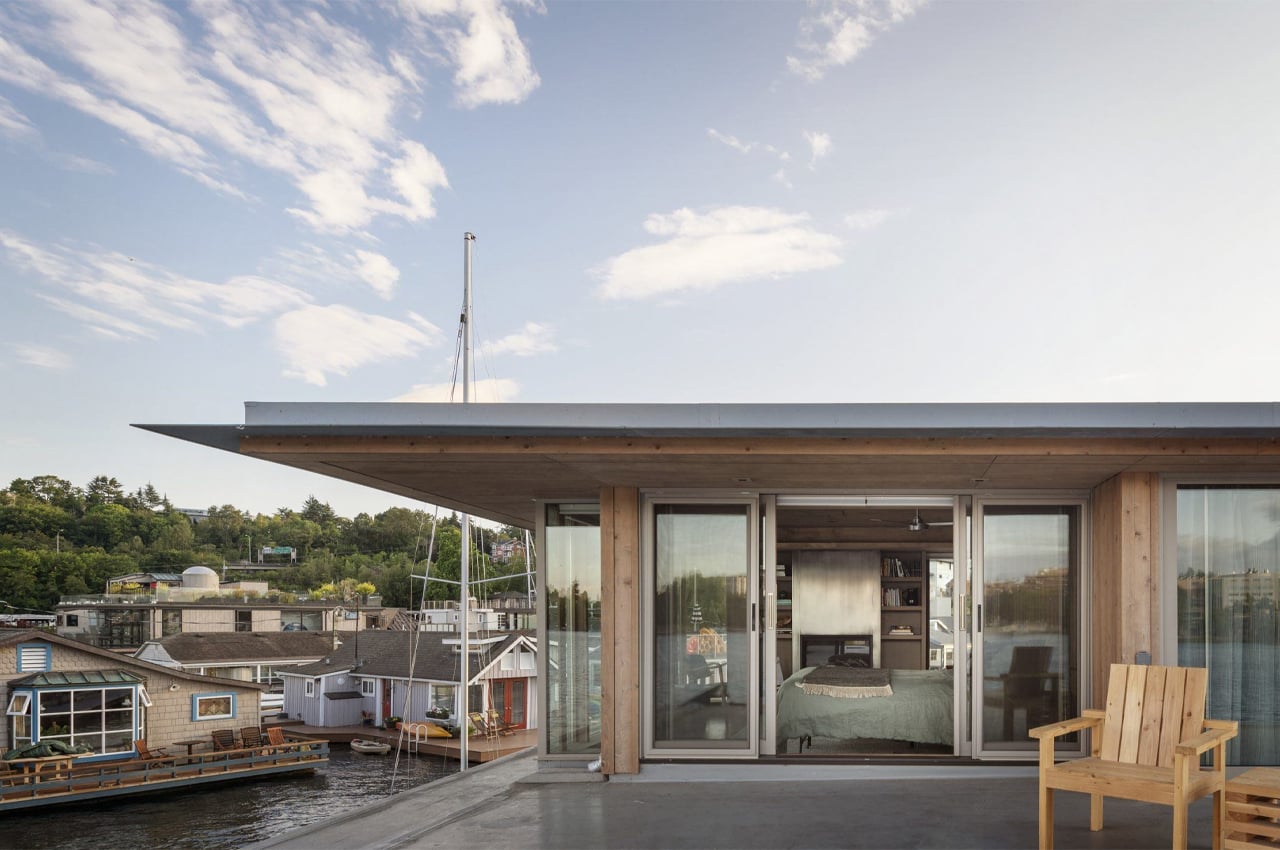
The Water Cabin is a floating home in Seattle’s Portage Bay that maintains the houseboat’s classic nautical personality and the weathered coziness of a cabin.
Why is it noteworthy?
Defined by a geometric silhouette that exhibits Kundig’s classic style, the Water Cabin’s frame is supported by galvanized steel structures that cradle spacious roof planes and wooden decks. Building the Water Cabin, Olson Kundig and their client hoped to blend interior and exterior spaces throughout the home. Arranged over two levels, the home’s interior spaces are specifically configured to maximize connections to the marine environment.
What we like
- Russian birch plywood ceilings line each room overhead, capturing the natural sunlight of the day and brightening the home
- Large roof overhangs protect the patio’s wood from seasonal elements
What we dislike
- Only a hidden Murphy bed functions as the home’s guest room
7. Halfmoon Bay Cabin
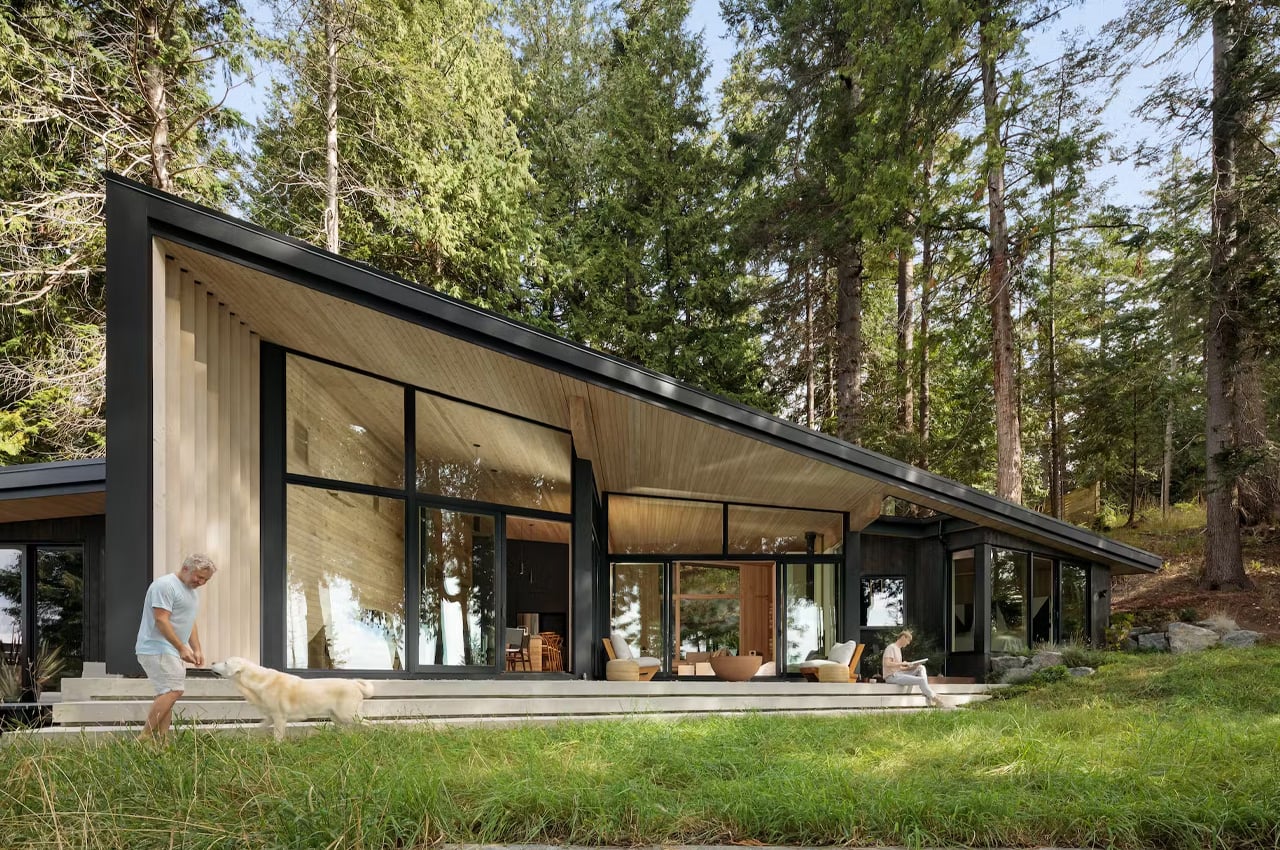
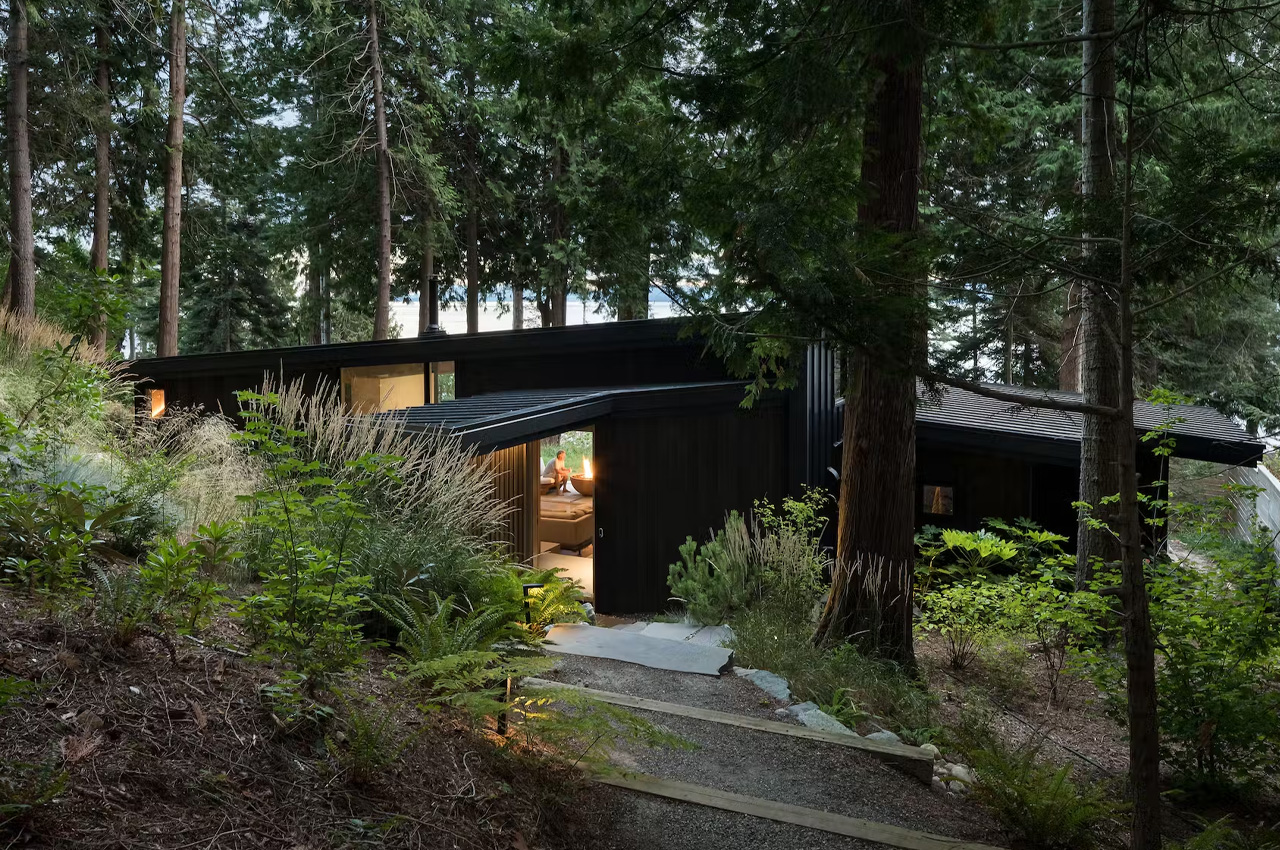
Designed by Patrick Warren and his husband Kevin Kaufman, this angular black cabin is called the Halfmoon Bay Cabin and is tucked away on the Sunshine Coast of British Columbia. The cabin is nestled away between trees and gracefully merges into the landscape.
Why is it noteworthy?
The home is defined by a covered entry, spacious living space, a steeply sloping roof, and massive floor-to-ceiling windows that create a connection between the indoors and the outdoors.
What we like
- The beautiful home is inspired by American coastal architecture of the 1970s, like those found on Fire Island in New York and Sea Ranch in Northern California
What we dislike
- The sloping roof of the design makes it difficult to expand the house.
8. Find Sanctuary
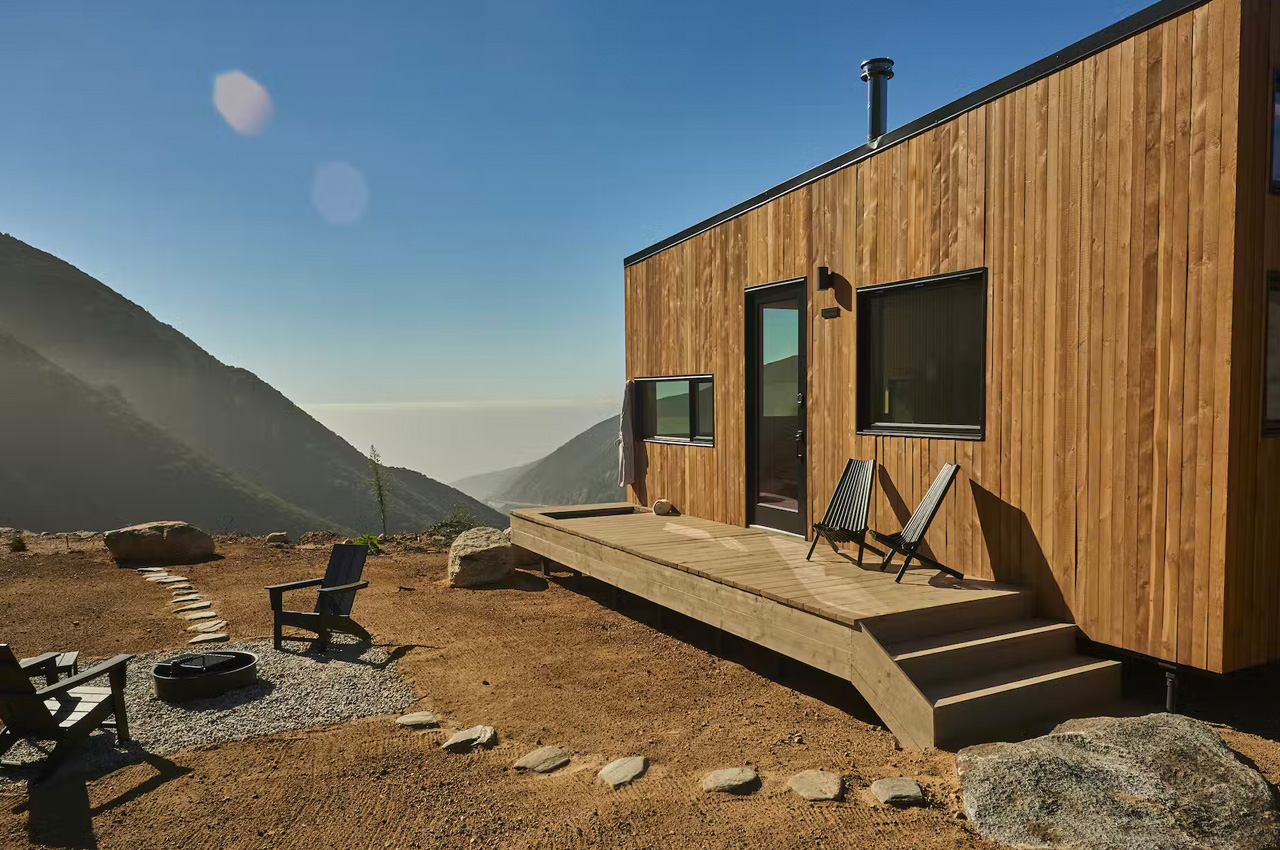
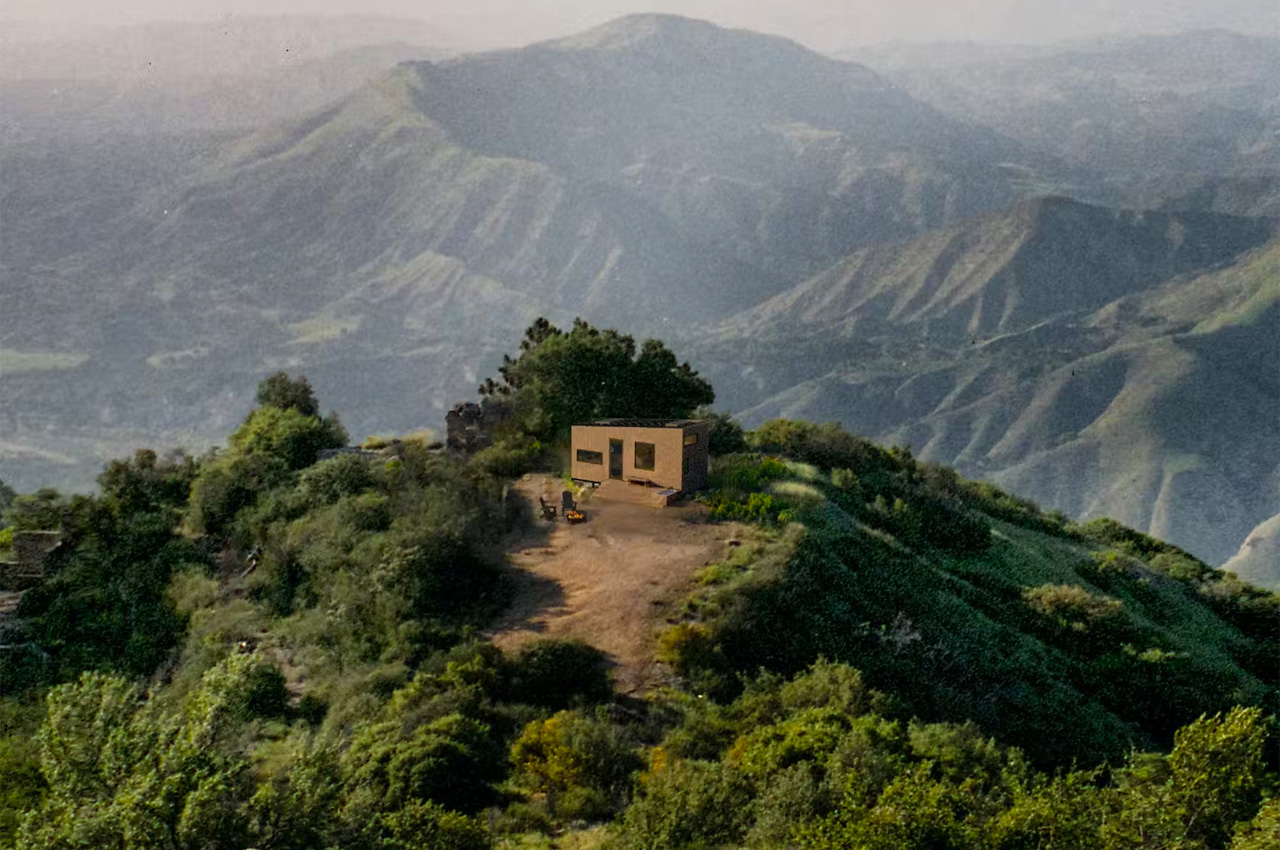
Designed by Charlie Hammon, the Find Sanctuary is designed to provide some peace of mind and a safe space for frazzled workers. The cozy and lovely home serves as an oasis for overworked employees who need some downtime, and space to unwind.
Why is it noteworthy?
Hammond then brought to life his idea, ‘Find Sanctuary’. Find Sanctuary is a renewed and revamped version of remote working. It includes a collection of 40 tiny cabins in Big Bear, California that can be rented, providing exhausted employees with an opportunity to work in a peaceful environment and regain some of their composure.
What we like
- Amped with stunning views of the surrounding mountains
- The wooden cabin has been equipped with high-speed WiFi, and a built-in desk with a stunning view as well, to make your workday efficient and serene
What we dislike
- It’s not released yet!
9. Adraga
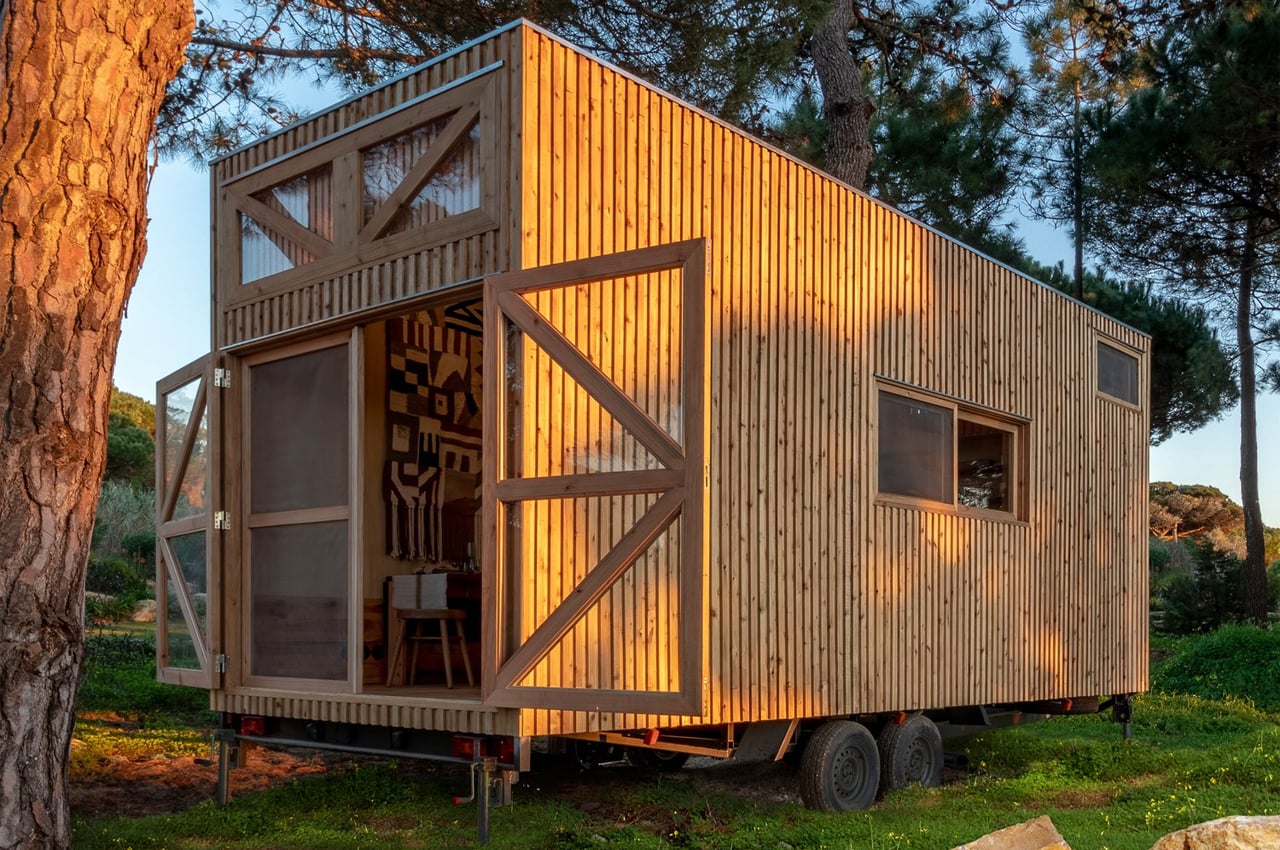
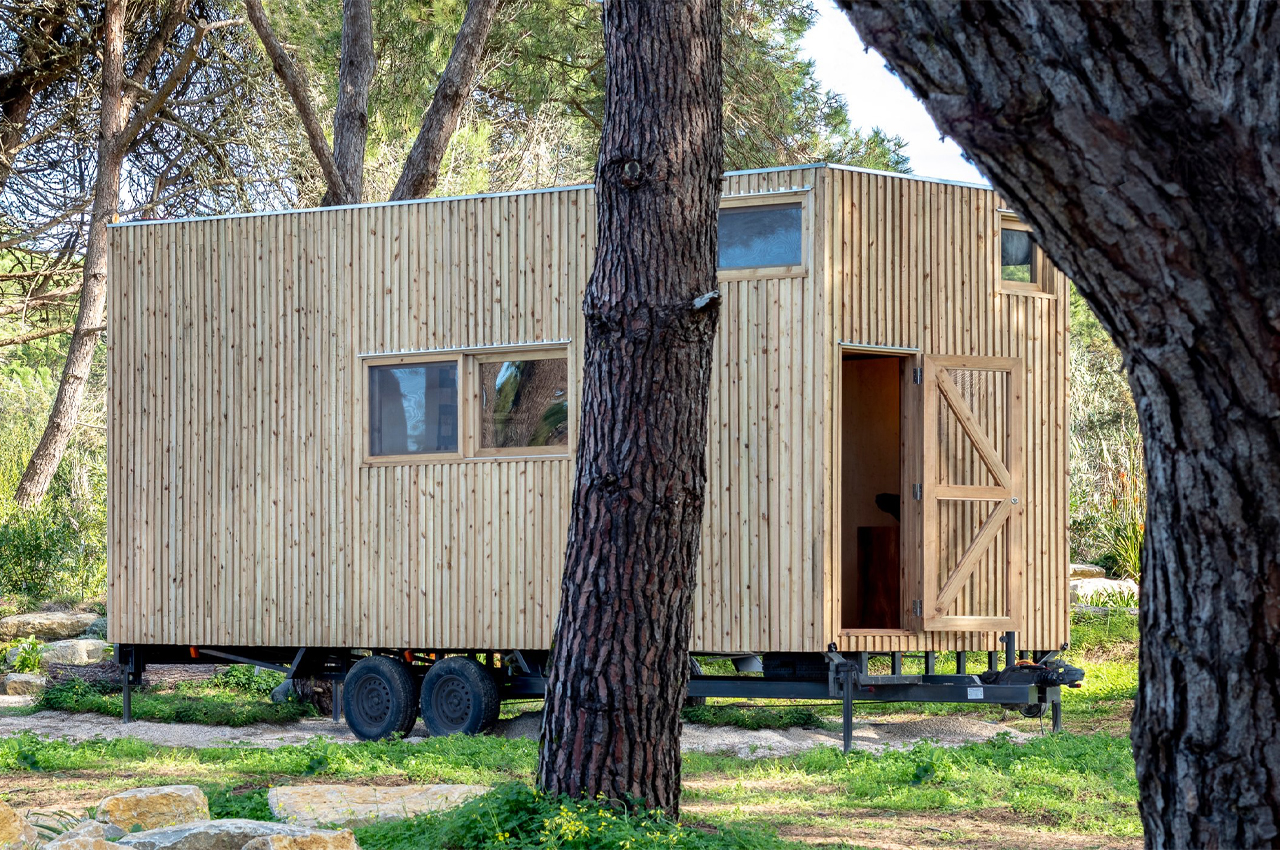
Called Adraga, the tiny home features an array of sustainability elements including solar panels, rainwater collection, and composting garden beds. As part of a larger series of tiny home on wheels, Adraga is home to a retired couple who just want to disconnect from the busyness of the world.
Why is it noteworthy?
Looking at Adraga from the outside, its unstained pinewood facades invoke simplicity. Defined by a rectangular, flat-roofed silhouette, the team at Madeiguincho found movement through windows and doors. On one end of the tiny home, a single, farmhouse-style door welcomes residents into the home’s subdued bathroom. There, against the soothing backdrop of walnut wood panels, residents can enjoy a semi-outdoor shower atop wooden floor slats.
What we like
- The layout of Adraga is designed to optimize the available floor space
- Incorporated with various off-grid elements
What we dislike
- In the bathroom, a dry toilet operates without flush water and closes the waste loop – but not everyone may be comfortable with using it
10. The Climber’s Cabin
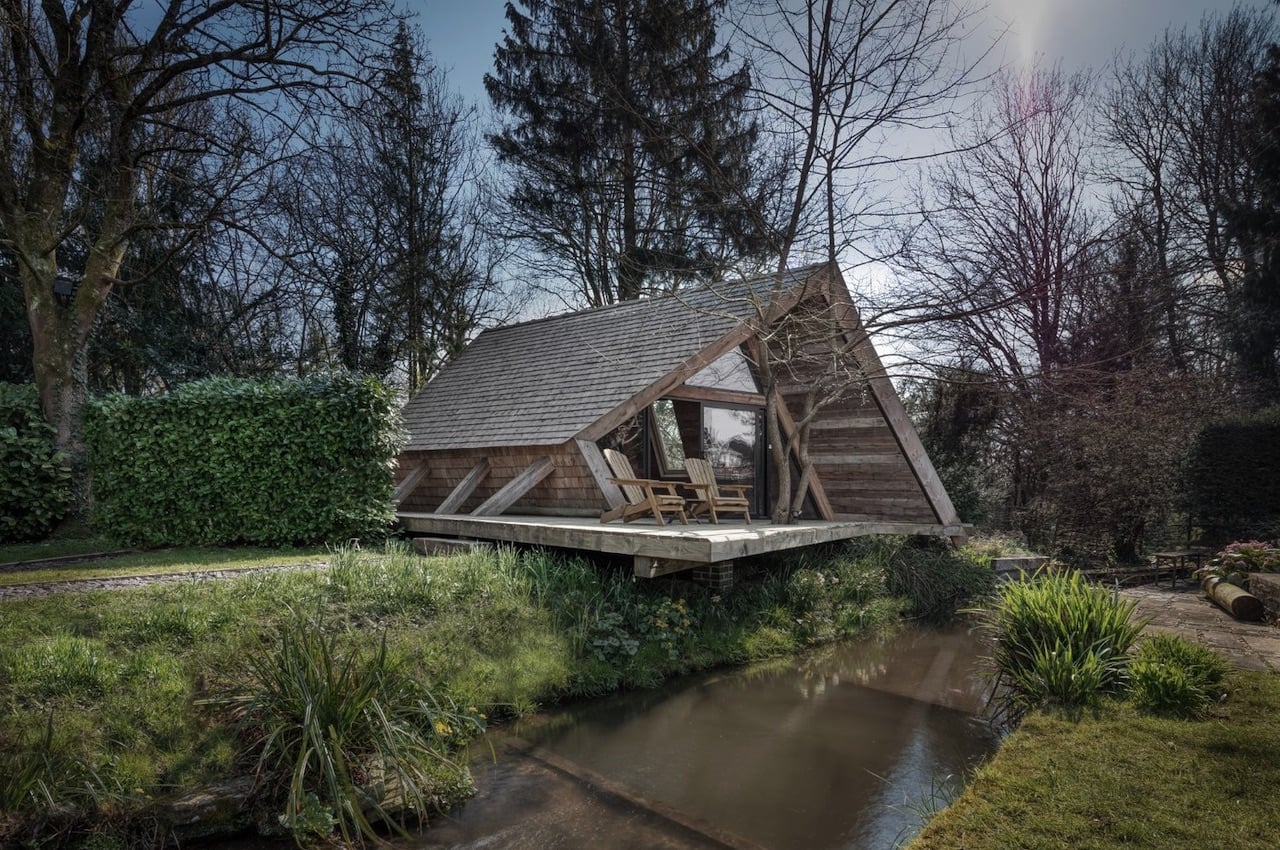
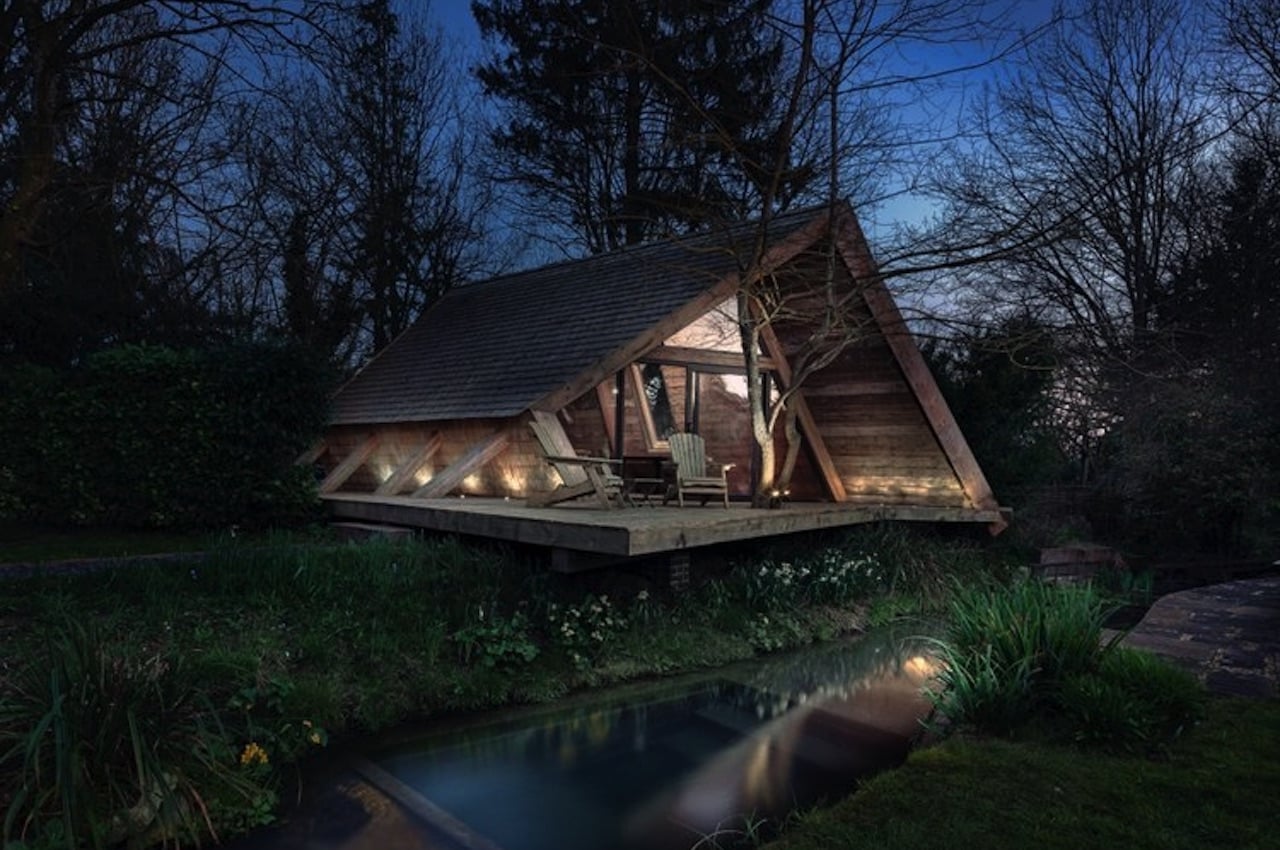
We have seen several interesting units, but we believe more well-designed cabins will be introduced. The latest on our radar is The Climber’s Cabin by AR Design Studio. As described, its primary purpose is as a space for children and as a guest cabin for when you want to entertain friends and family.
Why is it noteworthy?
The Climber’s Cabin is situated near a stream and a woodland, adding to the adventure experience. The initial plan for the cabin was for it to function as an ancillary space for the client’s house. The idea was that the cabin would be built quickly without any complex construction methods. Every step was supposed to be straightforward, so anyone could easily understand and follow. Construction should also be done using sustainable materials sourced locally. The project was actually born during those early months of lockdowns due to the pandemic.
What we like
- The A-shaped roof was optimized to allow a mezzanine
- Inside The Climber’s Cabin, interior finishes are made of used and upcycled boards
What we dislike
- The exterior comes in one style, not customizable
The post 10 wooden homes every architecture enthusiast would want to move into today first appeared on Yanko Design.
0 Commentaires